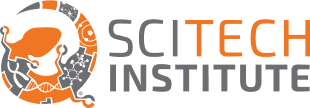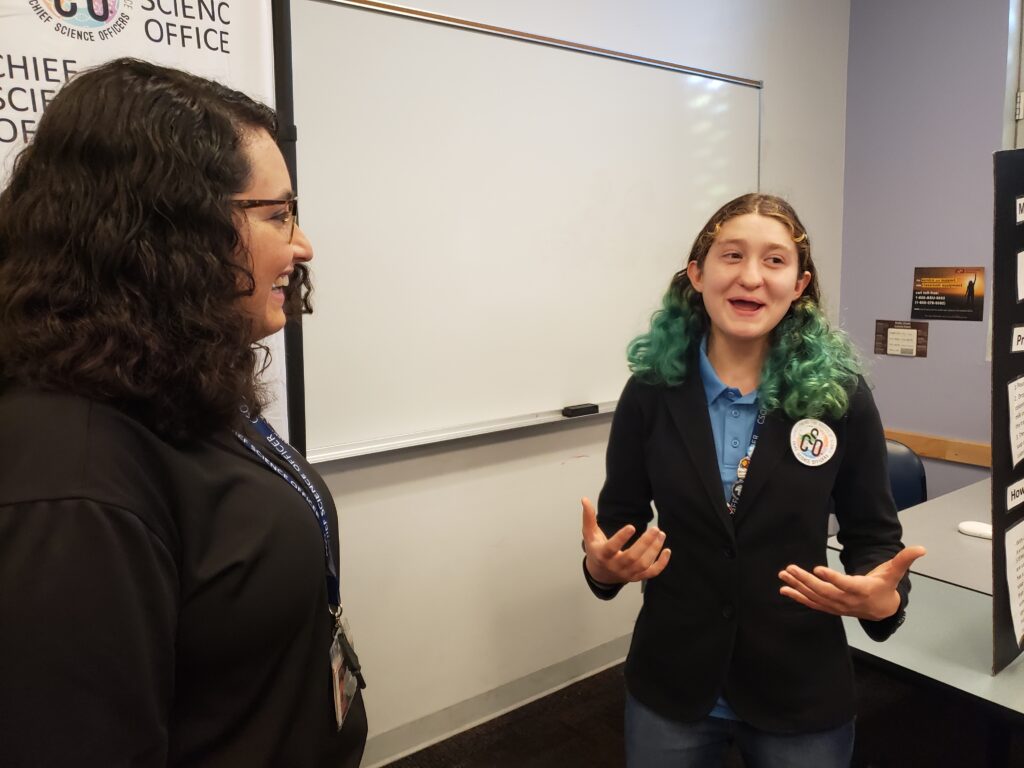This article appeared July 28 in the East Valley Tribune:
Mesa students set sights high through Arizona-based Chief Science Officers program
Mariana Myers remembers the moment science grabbed her and sent her down a path of discovery.
She got a chance to meet a Harvard geneticist and asked him about modifying a chicken to become a dragon. “I was really into dragons,” she explained. The scientist engaged her in a conversation and they even exchanged emails.
Mariana was in the third grade.
“That was it,” she said. “That’s all it took for me to become interested in genetics.”
Mariana is now 14 and entering her freshman year at Mesa’s Red Mountain High School. But like that Harvard scientist from her not-so-distant past, she has become an ambassador for science and a role model to her peers and others.
Not long after that third-grade encounter, Mariana became the “chief science officer” at her school, an elected position not unlike student body president. Her role as a “CSO” was to work with students, parents and administrators to enhance science education and advocate for STEM – science, technology, engineering and math.
The program is a home-grown Arizona initiative founded in 2016 by the nonprofit Arizona SciTech Institute. That first year there were 80 participating schools. Today the program extends to 400 schools in four countries and nine states.
“We continue to have interest in the program throughout the country and across the globe,” said Jeremy Babendure, director of the Institute. “It’s an example of the innovation that exists in Arizona and the strength of STEM in our schools and communities.”
That strength – and the international flavor of the CSO program – was on display last week at Arizona State University. More than 250 students attended a skill-building leadership institute that included participants from Kenya, Kuwait and Sonora, Mexico.
“The youth participating in the Chief Science Officers Summer Leadership Institute bring a level of energy and excitement for science that is incomparable.,” said Christina Avila, director of Access ASU, a university program dedicated to increasing access to higher education. “The youth empower each other to take their love of science to the next level.”
Mariana Myers is doing exactly that. After a salty four years in the program, she is no longer taking classes. She is teaching them – with the poise and professionalism of someone much older.
“I have learned so many skills in this program,” she said. “It’s also given me a voice in my school and in my community to help support the sciences.”
That’s the goal of the CSO program, or as the Star Trek intro sums up, “To boldly go where no one has gone before” – at least as it extends to STEM education.
During her tenure as school CSO, Mariana started a “science facts” feature as part of school announcements and launched a teen science café that brought in STEM professionals to meet and mentor students.
This year she plans to expand the café concept and work to grow her school’s annual STEM expo.
Cade Watkin was also attending last week’s leadership institute. He’s entering his senior year at Mesa’s Skyline High School and his first year as a chief science officer.
His personal CSO action plan includes the goal of launching a STEM club at Skyline.
“I want to work to get more students involved in STEM fields,” he said. “I love science and I want to share that passion with the community and get others involved.”
Those are the outcomes and the leaps in individual growth that make the program so appealing to students and schools across the globe, said Babendure.
“Our student leaders will learn from each other this week and go back home to share best practices with their own schools and communities,” he said. “They’ll also meet with their local leaders to discuss initiatives and ways to make STEM education stronger.”
Mariana has set her personal goals even higher. She’s working on a science fair project that will explore a combination of chemicals to cure a cancer-like growth on plants. But she hasn’t forgotten about that dragon.
“The scientist I met in third grade had genetically altered a chicken embryo to develop a snout like a dinosaur,” she said. “It may be possible someday to create a dinosaur. And what’s a dragon? Basically a flying dinosaur.”
—
For more information about the program, visit chiefscienceofficers.org
—






